Which Large Electric Vans Have the Best Range 2025?
If you’re considering a large electric van for your next commercial vehicle, there is now a wide – and growing – choice of models to choose from that will significantly reduce your running costs.
Large vans represent a tough test for electric power trains. Bigger vans are primarily designed to cover longer distances and carry larger, heavier cargo than their Small and Medium Van counterparts.
However, there are also some major benefits to opting for electric over diesel. For one, running costs are reduced significantly, while its zero-tailpipe emissions status allows it to avoid fees for entering Clean Air Zones.
Moreover, a large van also means a large battery can be integrated into the chassis to offer increased range that is sufficient to cover long distances between recharges.
There is now an impressive choice of electric vans on the market, not least in the large van sector with everything from the Ford E-Transit to the Mercedes-Benz eSprinter to the Maxus eDeliver 9 now also available with a battery powertrain.
But which large vans will go the distance in terms of outright range?
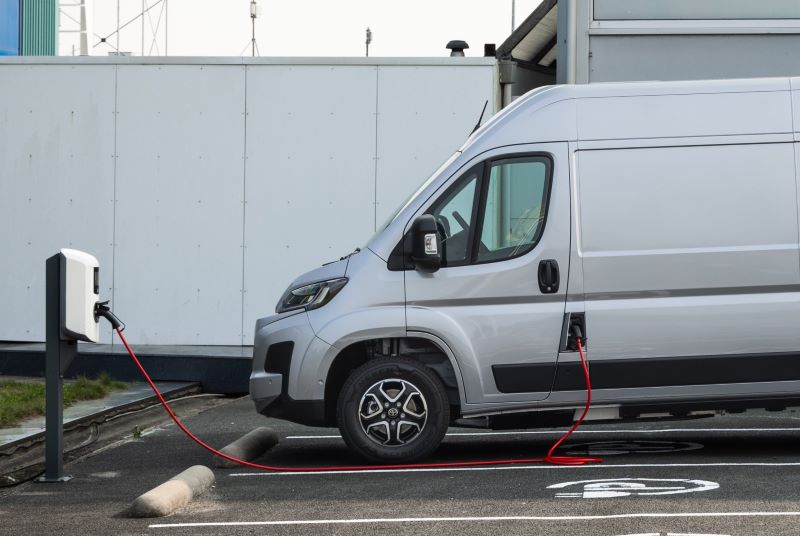
What Is Electric Van Range?
The range of an electric van represents how far a vehicle will travel on a single charge.
For turbodiesel or petrol vans, this is the equivalent of how many miles you can complete on a single tank of fuel from full to empty.
While electric range isn’t as far as fuel range, the benefits are you won’t be emitting any carbon emissions, while charging with electricity is significantly cheaper than filling with fuel.
Currently manufacturers will show range figures for ‘city’ environments, where lower speeds and shorter journeys travelled will generally return more mileage.
However, the ‘combined’ WLTP (Worldwide Harmonized Light Vehicles Test Procedure) figures take into account a variety of driving environments to present an average figure – this is the figure we will take into account here.
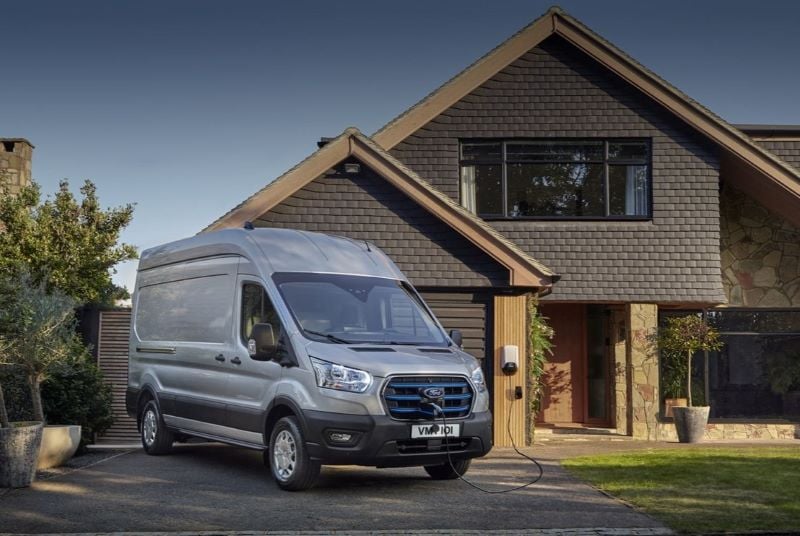
Lease An Electric Van With Vansdirect
Leasing a new electric van with Vansdirect has never been easier and better value.
Get the right electric van at the right deal, right now with the best electric van leasing deals available across a wide range of models, including the Vauxhall Movano Electric, the Renault Master E-Tech and Iveco eDaily.
Speak to our expert team today and you could be driving a new electric van for less than you think, sooner than you thought.
Ranking Electric Large Van Range
For the purpose of this ranking, we have listed the combined WLTP figure as stated by each manufacturer.
It should be noted that some models offer multiple sized batteries, giving some variation as to their range and power potential as a means of offering a lower price version.
Electric Large Vans With The Best Stated Range
| Large Van | Battery | Max Power | Range* | Recharge | ||
| 1. | Renault Master E-Tech | 87kWh | 140bhp | 285 miles | 37mins | 0-80% |
| 1= | Nissan Interstar EV | 87kWh | 141bhp | 285 miles | 60mins | 0-100% |
| 2. | Mercedes-Benz eSprinter | 113kWh | 201bhp | 271 miles | 55mins | 10-80% |
| 3= | Citroen e-Relay | 110kWh | 275bhp | 265 miles | 55mins | 0-80% |
| 3= | FIAT E-Ducato | 110kWh | 275bhp | 265 miles | 55mins | 0-80% |
| 3= | Peugeot E-Boxer | 110kWh | 275bhp | 265 miles | 55mins | 0-80% |
| 3= | Toyota Proace Max Electric | 110kWh | 275bhp | 265 miles | 55mins | 0-80% |
| 3= | Vauxhall Movano Electric | 110kWh | 275bhp | 265 miles | 55mins | 0-80% |
| 4. | Ford E-Transit | 89kWh | 266bhp | 249 miles | 28mins | 10-85% |
| 5. | Farizon SV | 106kWh | 228bhp | 247 miles | 40mins | 20-80% |
| 6= | Mercedes-Benz eSprinter | 81kWh | 201bhp | 208 miles | 42mins | 10-80% |
| 6= | Mercedes-Benz eSprinter | 81kWh | 134bhp | 208 miles | 42mins | 10-80% |
| 7. | Maxus eDeliver 9 | 88kWh | 201bhp | 205 miles | 51mins | 5-100% |
| 8. | Ford E-Transit | 68kWh | 181bhp | 196 miles | 37mins | 10-85% |
| 9. | Iveco eDaily | 148kWh | 188bhp | 186 miles | 50mins | 20-80% |
| 10. | Maxus eDeliver 9 | 77kWh | 201bhp | 186 miles | 51mins | 5-100% |
*Using Rapid Fast-Charger facilities, variance in power capacity for charging
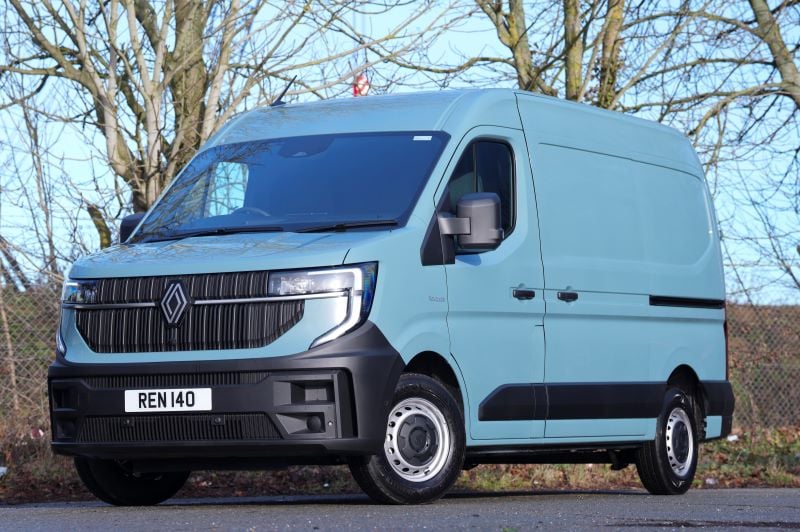
1. Renault Master E-Tech, Nissan Interstar EV (87kWh) – 285 miles
If you’re set on getting a large electric van, the all-new Renault Master E-Tech and its near-identical Nissan Interstar EV sister are the undisputed choice if range trumps all else.
Clearly a lot of thinking by Renault – who led the project - has gone into transforming the venerable Master E-Tech into a genuinely enticing option versus its conventional diesel-powered counterpart.
It starts with the exterior where an effort has been made to shape the aerodynamics to ensure the Master is more slippery through the air. With 20 per cent less drag over the old model, plus big weight savings, the Master E-Tech is incredibly efficient for its size.
It means that while the 87kWh battery is quite a bit smaller than many rivals, it beats each and every one of them for combined range anyway at 285 miles.
Better still, the Nissan Interstar EV achieves the same figures but comes with a five-year warranty as standard, unlike the Master’s three-years.
It also has a fast recharge time of just 37 minutes to go from 0 to 80 per cent.
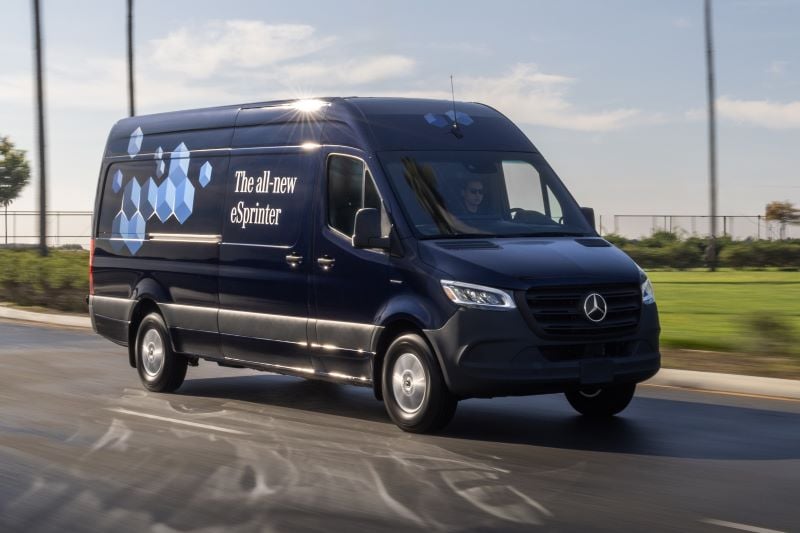
2. Mercedes-Benz eSprinter (113kWh) – 271 miles
The Mercedes-Benz eSprinter is available with two battery sizes – 81kWh and 113kWh – with the latter offering the most generous range at 271 miles.
As one of the most popular large vans in its class, the eSprinter’s impressive long-range credentials simply add to the Mercedes’ enduring appeal.
Go for the 81kWh battery capacity model and you can choose between 134bhp or 201bhp versions, both of which return 208 miles of range.
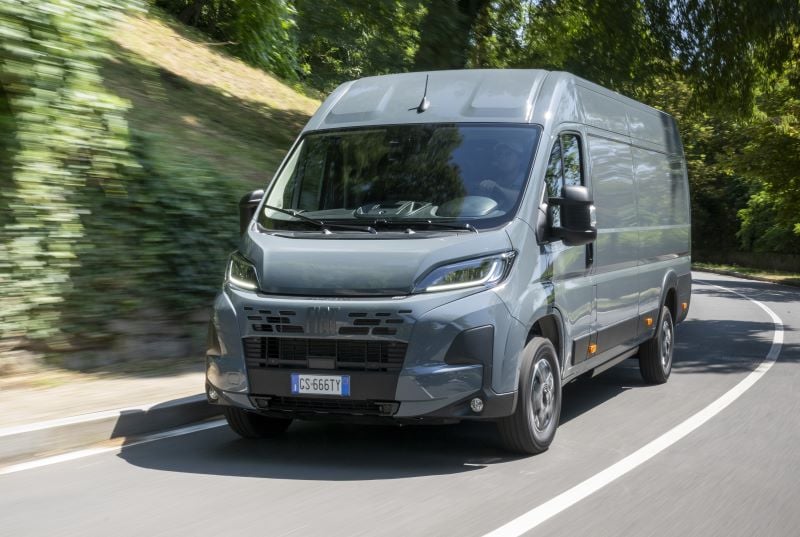
3. Citroen e-Relay, FIAT E-Ducato, Peugeot E-Boxer, Toyota Proace Max Electric, Vauxhall Movano Electric (110kWh) – 263 miles
The ‘Big Five’ from Stellantis (and Toyota) have been a market-leader where electric vans are concerned with substantial investment made in bringing its brands up to scratch when it comes to battery power.
Like Stellantis’ Small and Medium Van collaboration, the five Large Vans from the automotive group have identical running gear and therefore identical range figures.
Fortunately, these are favourable with the Citroen e-Relay, FIAT E-Ducato, Peugeot E-Boxer, Toyota Proace Max Electric and Vauxhall Movano Electric achieving 263 miles of range.
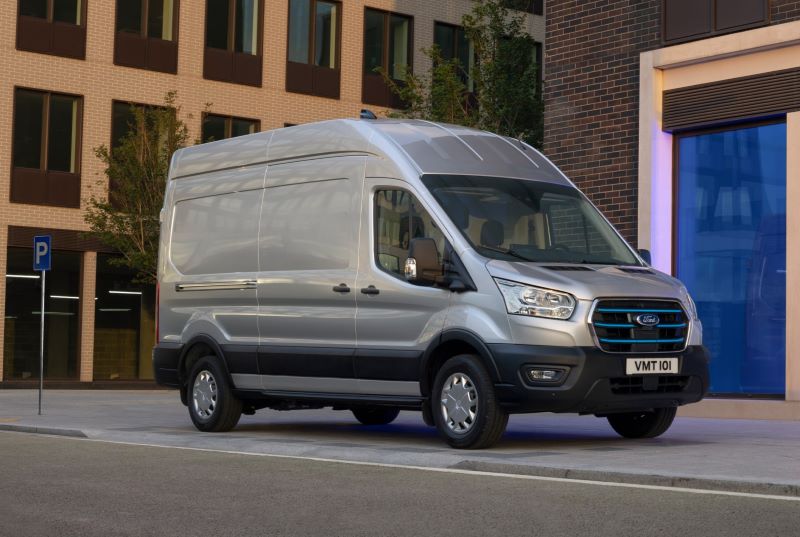
4. Ford E-Transit (89kWh) – 249 miles
When even the venerable Ford Transit goes electric, you know there is a big emphasis for businesses to adopt a greener way of travel.
While the E-Transit, as it is known, isn’t a class-leader in terms of range, its 249 miles is competitive and a big improvement of large electric vans of old, while still retaining the myriad impressive traits that make the Blue Oval model so popular year-after-year.
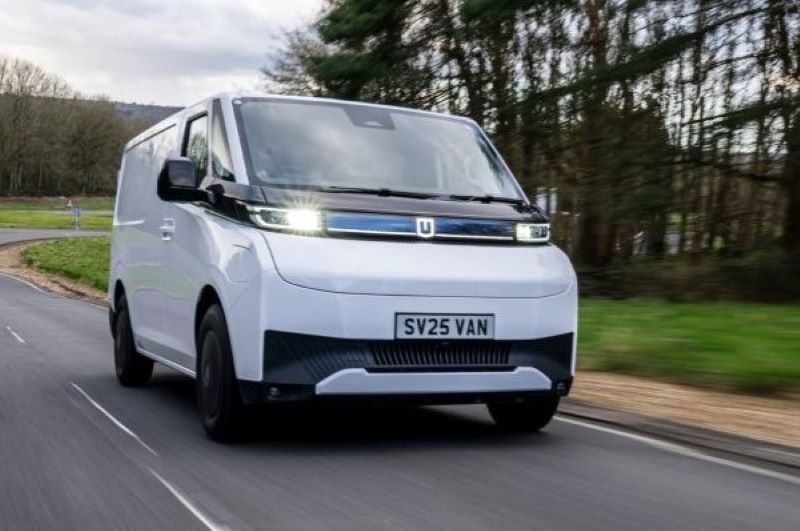
5. Farizon SV (106kWh) – 247 miles
A brand-new entry into the large van class, the Farizon SV is among the first to arrive as a fully dedicated electric vehicle that has been designed with a battery from the ground up.
By being developed first and foremost as an electric van, the SV therefore sidesteps many of the challenges associated with integrating a battery into an existing large van design, like the Transit, Movano et al.
It also means the SV can straddle both the Medium and Large Van classes with smaller versions of the battery – 67kWh and 83kWh – in models that are aimed at the Ford E-Transit Custom and Mercedes-Benz Vito.
By contrast, the largest 106kWh battery is affixed to the SV in its largest guise – L3 H3 – which despite being a bigger body size than rivals here, still returns an impressive 247 miles of range.
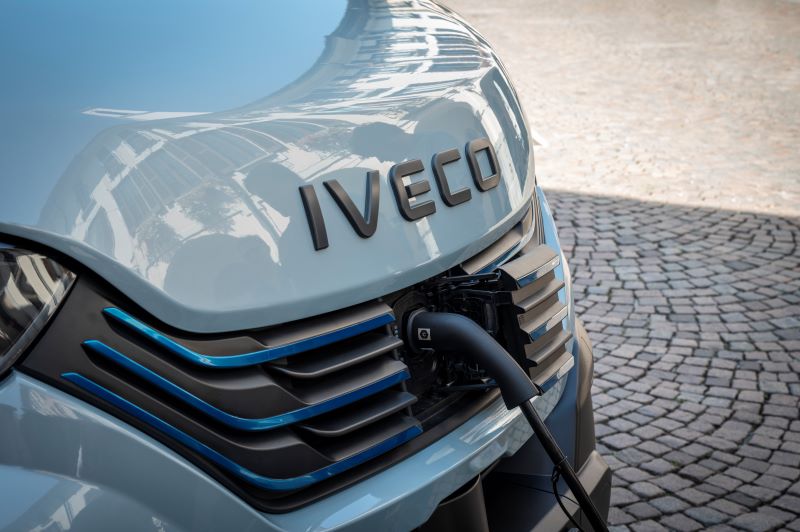
What Can I Do To Extend My Electric Van’s Range?
Unlike fuel, range can be more easily affected by different factors, from aggressive driving styles, higher travelling speeds, heavier loads, use of air-conditioning and ambient temperatures all potentially impacting your chances of hitting the manufacturer-stated range.
On the flip side, however, there are steps you can take to ensure you can extend your range to get the most out of your vehicle.
Smooth Driving: The more aggressive you drive – such as harsher acceleration or heavier braking – the more energy you’ll use, particularly as you’ll reach faster speeds quicker due to linear acceleration.
Consistent Speed: Be mindful of using the accelerator more smoothly and progressively, while you should try to maintain constant speed as this is more efficient than frequent acceleration and deceleration.
Keep To Speed Limits: It is useful to remember that the WLTP (Worldwide Harmonized Light Vehicles Test Procedure) range figures quoted by manufacturers will be based around a combined cycle within the speed limit. If you stick to speed limits, it will be easier to predict your range in line with what is suggested by manufacturers.
Eco-Mode: Many electric vehicles have on-board features to assist with maximising the efficiency and durability of your battery. These include so-called ‘Eco’ modes, which can limit some functionality within the vehicle automatically – such as air-conditioning – or reduce the sensitivity of the accelerator.
Regenerative Braking: This is a common feature on electric vans. This involves an EV van recapturing energy during deceleration – foot off the accelerator but not on the brake pedal – from the friction generated in the process of slowing down. Some vehicles offer different levels of regeneration with some offering higher levels of friction for a higher rate of recapture. It is even possible to adapt the settings to use regenerative braking to bring a car to a stop without using the brake pedal at all.
Lighten The Load: While the very definition of running a van might make carrying heavy cargo an unavoidable factor, a lot of range can be recuperated by removing unnecessary weight where possible from the load bay. On the other hand, however, if you are able to run a van without any load, the comparatively light weight will improve range significantly.















